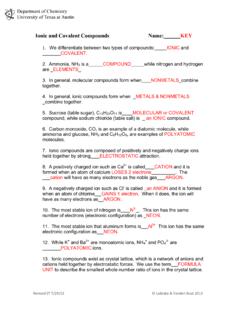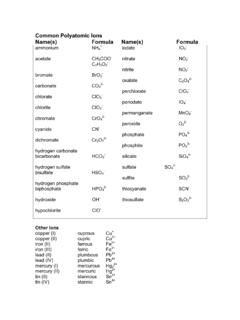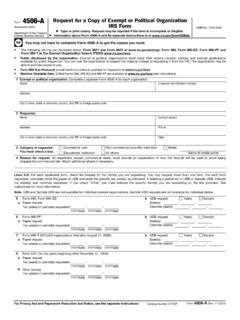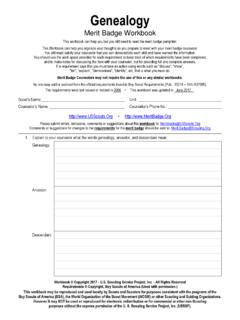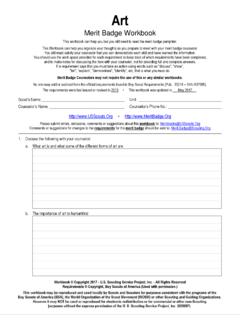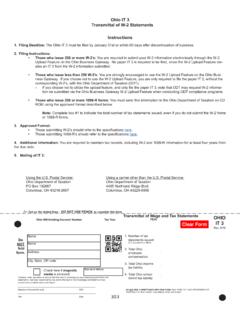Transcription of Kinetics formulas copy - University of Texas at Austin
1 Chemical Kinetics - formulas conc [A]. All rates written as time ort . Instantaneous rate is the slope of a concentration vs time plot and is d[A]. shown by the differential equation: dt . Overall rates for forward reactions are shown as POSITIVE rates, d[A]. therefore, all reactants (which have negative rate of change) must have their rates negated dt . In general for the overall reation: [A] [B] + [C] + [D]. aA + bB c C + d D = = =. overall rxn rate a t b t c t d t Note that each individual rate is divided by it's coefficient in the balanced chemical equation. Half-life (t1/2) : The time it takes for the concentration to drop to one half its current value during the course of the reaction. Note that the current value is typically the initial starting value - but not always. Rate Laws for: aA products (all the following equations assume that k is for the overall reaction).
2 Zero Order First Order Second Order rate = ak rate = ak[A] rate = ak[A]2. ln[A]0 ln[A]t = akt 1 1. [A]0 [A]t = akt [A] = akt ln 0 = akt [A]t [A]0. [A] . 1 1. [A]t = -akt + [A]0 ln[A]t = akt + ln[A]0 = akt +. [A]t [A]0. 1. [A]0 ln2 t1/ 2 =. t1/ 2 = t1/ 2 =. 2ak ak ak[A]0.. Watch out for this! Make sure you know HOW k is defined for a reaction. It must be known WHICH component that the rate is being expressed. Is it A? B? C? D? Many times k is given for the overall reaction. If that is the case then you must remember to scale k by the coefficients (a, b, c, or d) given in order to get the right rates for each component. That is: k = ak , etc (this is discussed in in your textbook). section . Temperature dependence of rate (Arrhenius Equation) k = Ae Ea /RT. Here's the straight line plot (y = mx + b) version: . Ea 1. ln k = + ln A. R T. When finding the new k at a new.
3 K2 Ea 1 1 Here is the version using half-lives instead of k's ln = . k1 R T1 T2 t1 Ea 1 1. ln =. Note this is the typical Arrhenius Equation where you have 2 t2 R T1 T2. specific rate consants at 2 specific temperatures. Remember This is still the Arrhenius Equation, EXCEPT we now show they come in pairs. Also note how the Arrhenius factor A, has TIME in place of rate constant. Time is inversely proportional factored OUT of the equation. to rate so the positions are switched. Any common timed event will work half-life is the most common.
